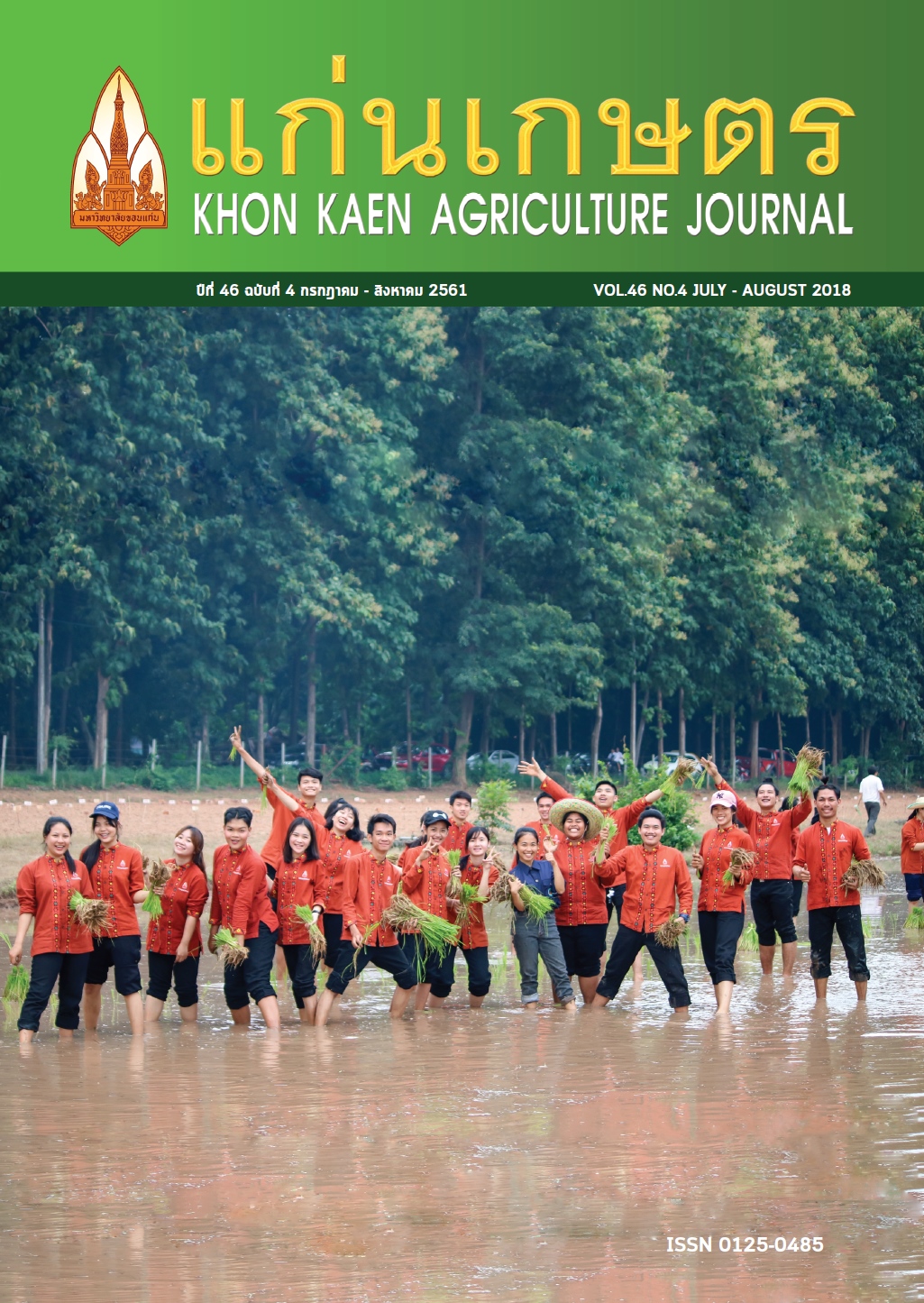Factors Influencing Sri Lankan Consumers’ Decisions to Purchase Fresh Milk
Main Article Content
บทคัดย่อ
The study investigates Sri Lankan consumers’ behaviour in relation to the purchase of fresh milk and the factors affecting their purchase decisions. A total 391 households from all nine provinces in Sri Lanka were surveyed with a structured questionnaire. Descriptive analysis, factor analysis and logistic regression were carried out to fulfil the objectives. The results reveal that a consumer’s decision to purchase fresh milk is significantly and positively influenced by his or her perception of its sensory attributes (the taste and smell of fresh milk), and that consumers are motivated by health and convenience factors and negatively influenced by advertising. Furthermore, about socio-economic factors the results show married consumer who has less household size, high household income, and high education level is more likely to purchase fresh. The results of this study give some useful information to marketers for their marketing strategies, as well as to the Sri Lankan government to enable it to take suitable steps to improve and enhance the fresh milk industry in Sri Lanka.
Article Details
เอกสารอ้างอิง
Bus, A. E. M., and Worsley, A. (2003). Consumers’ sensory and nutritional perceptions of three types of milk. Public Health Nutrition. 6: 201-208.
Celik Ates, H., and Ceylan, M. (2010). Effects of socio-economic factors on the consumption of milk, yoghurt, and cheese: Insights from Turkey. British Food Journal. 112: 234-250.
Central Bank of Sri Lanka. (2016). Central Bank Annual Report. Available: https://bit.ly/BmW3Ag. Accessed April 14, 2016.
De Alwis, A. E. N., J. C. Edirisinghe, and A. M. T. P. Athauda. (2011). Analysis of factors affecting fresh milk consumption among the mid-country consumers. Tropical Agricultural Research and Extension. 12: 103-109.
Gunden, C., A. Bilgic, B. Miran, and B. Karli. (2001). A censored system of demand analysis to unpacked and prepackaged milk consumption in Turkey. Quality and Quantity. 45: 1273-1290.
Hair, J. F., M. F. Wolfinbarger, D. J. Ortinau, and R. P. Bush. (2008). Essentials of marketing research. McGraw-Hill/Higher Education.Heaney, R. P. (2000). Calcium, dairy products and osteoporosis. Journal of the American College of Nutrition. 19: 83S-99S.
Hosmer, D. W., and S. Lemeshow. (2000). Applied logistic regression. John Wiley & Sons, Inc.Kilic, O., C. Akbay, and G. Y. Tiryaki. (2009). Factors affecting packed and unpacked fluid milk consumption. Agricultural Economics. 55: 557-563.
Kodithuwakku, S. S., (2008). Is fresh milk a viable alternative to powdered milk? A study of consumer responses to recent price escalation of powdered milk. Economic Review, 17. Available: https://bit.ly/2B31HIR. Accessed April 14, 2017.
Kotler, P., and G. Armstrong. (2010). Principles of marketing. Pearson Education.
Kumar, A. A., and S. Babu. (2014). Factors influencing consumer buying behavior with special reference to dairy products in Pondicherry state. Journal of Research in Management and Technology. 65: 65-73.
McGill, C. R., V. L. Fulgoni III, D. DiRienzo, P. J. Huth, A. C. Kurilich, and G. D. Miller. (2008). Contribution of dairy products to dietary potassium intake in the United States population. Journal of the American College of Nutrition. 27: 44-50.
Nagyova, L., M. Foret, and M. Krocanova. (2006). Lifestyle changes and their influence on customer behavior. Zemedelska Ekonomika Praha. 52: 532-538.
Nanayakkara, P., (2013). Liquid milk: On the path to self-sufficiency. Business Today, 05. Available: https://bit.ly/2B7LvWJ. Accessed April 10, 2016.
Raunikar, R., and C. L. Huang. (1984). Characteristics of fluid milk expenditure patterns in the northeast region. Education. 1: 1-59.
Senadisai, P., J. Trimetsoontorn, and W. Fongsuwan. (2014). Model of factors influencing the intention to purchase lactose-free milk for the population of Bangkok. Research Journal of Business Management. 8: 284-298.
Teratanavat, R., and N. H. Hooker. (2006). Consumer valuation and preference heterogeneity for novel functional food. Journal of Food Science. 71: 533-540.
Unal, R. N., and T. Besler. (2006). Importance of milk in human nutrition, T. R. Ministry of Health, General Directorate of Basic Health Services Department of Food Safety, Ankara.
Wang, L., J. E. Manson, J. E. Buring, I. M. Lee, and H. D . Sesso. (2008). Dietary intake of dairy products, calcium, and vitamin D and the risk of hypertension in middle-aged and older women. Hypertension. 51: 1073-1079.
Wham, C. A., and A. Worsley. (2003). New Zealanders’ attitudes to milk: Implications for public health. Public Health Nutrition. 6: 73-78.
Yamane, T. (1973). Statistics: an introduction Analysis 3rded. Harper and Row, New York.


